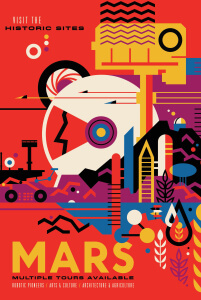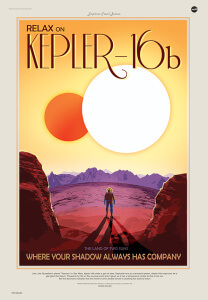

Such training makes sense. Who else would you want in charge of a spacecraft other than a pilot, especially one trained in emergencies as fighter pilots are.
Now, however, NASA is looking for astronaut candidates through an online application, and being a pilot isn’t the top qualifications required. In fact, being a jet aircraft pilot is optional and not required if you have an advanced degree.
The deadline for the job applications passed recently, so there’s no need to apply for the job now — at least for the 2017 astronaut candidates. But hopefully, if NASA starts sending more people into space, the Class of 2018 and beyond will be needed.
The online application, though now closed, offers an interesting look at the job requirements to become an astronaut — an occupation that kids have grown up aspiring to for 50 years.
Interesting requirements to be an astronaut
At a pay rate of $66,026 to $144,566 per year, it’s a job that I thought would pay more, given the risks and responsibilities. The U.S, president only makes $400,000 per year, a lot less than professional athletes.
But beyond the salary, what interested me the most about the job was the types of college degrees accepted as the minimum requirements. More specifically, the degree fields that are NOT considered qualifying.
Before getting to those, here are fields that candidates must have at least a bachelor’s degree in:
- Engineering
- Biological science
- Physical science
- Computer science
- Mathematics
Those all make sense and are areas you may want to start pushing your kid into if they ever tell you they want to be an astronaut when they grow up.
Degrees you don’t want as an astronaut
But there are some degree fields that NASA says aren’t qualifying, and some surprised me:
- Technology (engineering technology, aviation technology, medical technology, etc.)
- Psychology (except for clinical psychology, physiological psychology, or experimental psychology, which are qualifying)
- Nursing
- Exercise physiology or similar fields
- Social sciences (geography, anthropology, archaeology, etc.)
- Aviation, aviation management, or similar fields
Pilot experience optional
The second qualification goes into pilot experience. It offers two options:
- “At least 3 years of related, progressively responsible, professional experience obtained after degree completion.”
- “OR at least 1,000 hours pilot-in-command time in jet aircraft. An advanced degree is desirable and may be substituted for experience as follows: master’s degree = 1 year of experience, doctoral degree = 3 years of experience. Teaching experience, including experience at the K-12 levels, is considered to be qualifying experience for the Astronaut Candidate position, provided the initial degree is qualifying.”
Earning a doctoral degree or having three years of experience is a lot of work, but not as much, I suspect, as 1,000 hours as a jet pilot. So if your kid is willing to go to college a little longer, then they don’t need to become a jet pilot.
The last major qualification is being able to pass the NASA physical. All crewmembers will be required to perform spacewalks, and must meet anthropometric requirements for spacecraft vehicles and spacesuits. In other words, you’ll have to be the right size to drive a vehicle on Mars and fit into a spacesuit.
Fly to Mars

NASA is transitioning to using commercial spacecraft for its crew and cargo transport to the International Space Station. For the last 15 years, humans have been living aboard the orbiting laboratory continuously, and future crewmembers are needed. Longer missions to Mars are planned for sometime in the future.
The job has some of the best benefits around, even if you don’t include the many benefits of working for the federal government. Being an astronaut in space is every kid’s dream — or at least many of them — and this job description from NASA is a roadmap on how to get there.
If you can’t get there, NASA has some downloadable posters of what future travel may look like.



One Comment